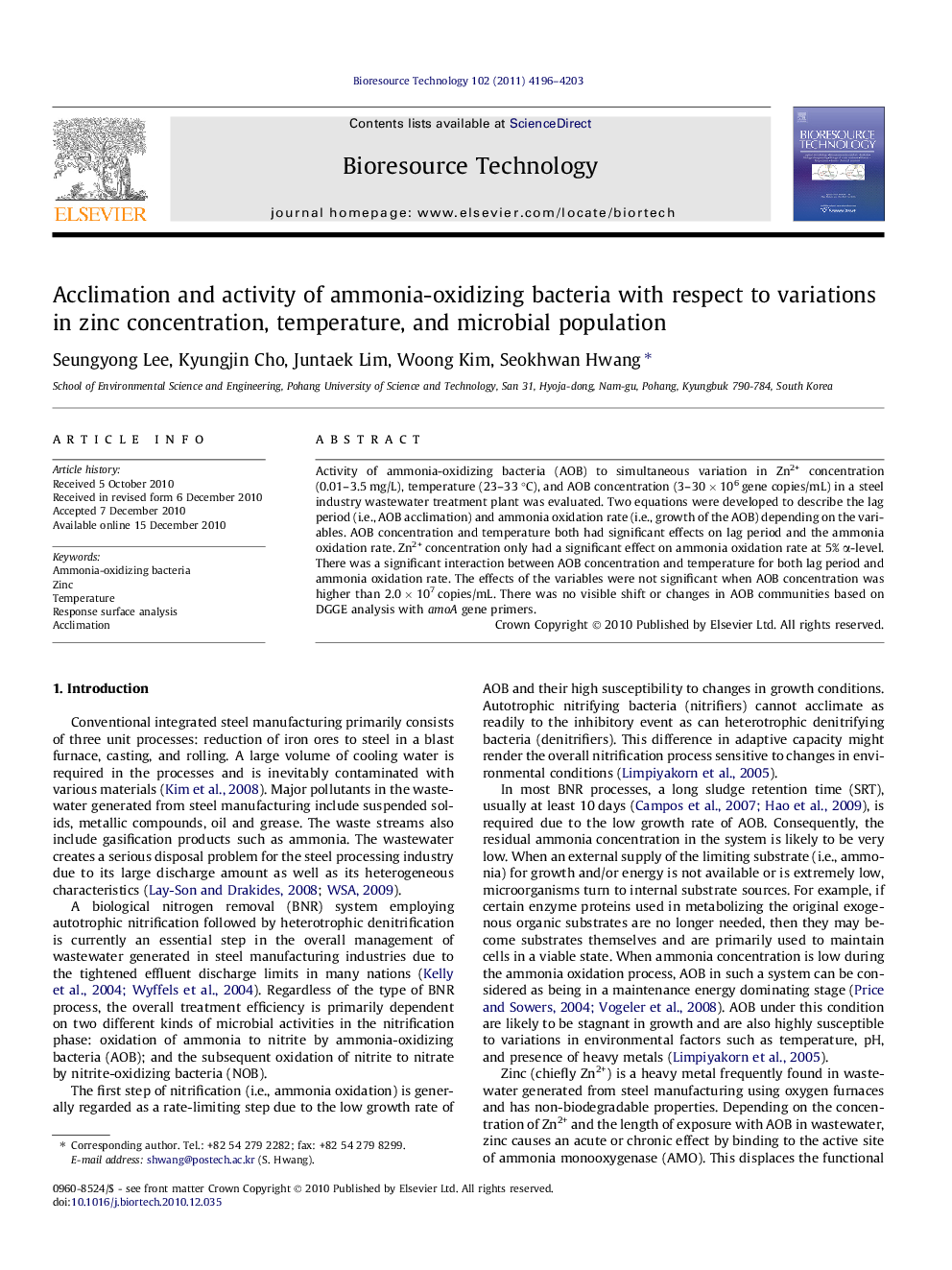| Article ID | Journal | Published Year | Pages | File Type |
|---|---|---|---|---|
| 10395278 | Bioresource Technology | 2011 | 8 Pages |
Abstract
Activity of ammonia-oxidizing bacteria (AOB) to simultaneous variation in Zn2+ concentration (0.01-3.5 mg/L), temperature (23-33 °C), and AOB concentration (3-30 Ã 106 gene copies/mL) in a steel industry wastewater treatment plant was evaluated. Two equations were developed to describe the lag period (i.e., AOB acclimation) and ammonia oxidation rate (i.e., growth of the AOB) depending on the variables. AOB concentration and temperature both had significant effects on lag period and the ammonia oxidation rate. Zn2+ concentration only had a significant effect on ammonia oxidation rate at 5% α-level. There was a significant interaction between AOB concentration and temperature for both lag period and ammonia oxidation rate. The effects of the variables were not significant when AOB concentration was higher than 2.0 Ã 107 copies/mL. There was no visible shift or changes in AOB communities based on DGGE analysis with amoA gene primers.
Related Topics
Physical Sciences and Engineering
Chemical Engineering
Process Chemistry and Technology
Authors
Seungyong Lee, Kyungjin Cho, Juntaek Lim, Woong Kim, Seokhwan Hwang,
